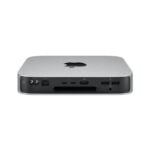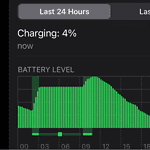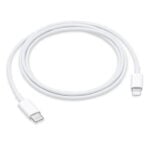The Apple Vision Pro and Meta Quest 3 aren’t just different price points—they represent entirely different philosophies in the fast-evolving world of mixed reality. One is a futuristic productivity powerhouse built around Apple’s ecosystem; the other is a refined, standalone entertainment and gaming headset that redefines value for money.
As spatial computing and extended reality (XR) devices continue to inch closer to mainstream adoption, the Vision Pro and Quest 3 sit at the forefront. After hands-on time with both, here’s how they stack up across critical categories—from visuals to gaming to comfort.

Visual Fidelity: Micro-OLED vs LCD
Apple Vision Pro
Apple’s dual micro-OLED panels push a staggering ~3660×3200 per eye—totaling 23 million pixels. That’s higher than most 4K monitors strapped to your face. The result? Near-lifelike detail, accurate colors, deep blacks, and a cinema-like experience for video content or work in virtual desktops. The high pixel density also dramatically reduces the “screen door” effect common in lesser headsets.
Meta Quest 3
The Quest 3 features dual LCD panels at 2064×2208 per eye. It’s a step up from the Quest 2 and gives a crisp, vivid image with a wider field of view (~110°). While not as sharp or color-accurate as the Vision Pro, it holds its own—especially considering the price.
Verdict: If your primary focus is watching 3D movies, immersive work environments, or augmented reality tasks, the Vision Pro is in a different class. But for most users, the Quest 3’s visuals are more than sufficient—especially for games.
Gaming & Performance
Meta Quest 3
Powered by the Snapdragon XR2 Gen 2 and 8GB RAM, the Quest 3 is optimized for VR gaming. It supports hand tracking, but the included Touch Plus controllers give you tactile precision when needed. You get access to over 500 VR titles on the Meta Store and compatibility with Xbox Cloud Gaming and Steam Link—turning it into a versatile gaming machine.
Apple Vision Pro
With an M2 chip and 16GB RAM, the Vision Pro is a productivity monster. It juggles multiple windows, full 3D interfaces, and high-resolution content with ease. But Apple has yet to position the Vision Pro as a gaming platform—there are very few games available, and it lacks controller support. Hand and eye tracking feel futuristic, but don’t quite match the physical feedback gamers crave.
Verdict: For gaming, the Quest 3 is hands-down the winner. It’s fun, responsive, and built around immersive play. The Vision Pro is better suited for work, watching content, or using Apple-native apps.
Passthrough & AR Quality
Apple Vision Pro
One of Vision Pro’s standout features is its incredibly sharp, color-accurate passthrough video. You can see your surroundings clearly enough to read fine text, thanks to multiple cameras and advanced processing. It’s ideal for blended reality applications—like using apps while seated at a real desk.
Meta Quest 3
The Quest 3 improves significantly over the Quest 2, offering full-color passthrough and decent clarity. But it can still appear grainy or slightly distorted, especially in low-light environments. It’s functional but not polished.
Verdict: Apple wins on visual fidelity and mixed reality accuracy. The passthrough is more usable for daily tasks.
Comfort & Usability
Meta Quest 3
Weighing about 515g and with a balanced strap system, the Quest 3 is built for extended sessions. It’s completely wireless, with everything built into the headset—no tethers, no belt packs. Battery life averages 2–3 hours.
Apple Vision Pro
At 600–650g, the Vision Pro isn’t heavy by high-end standards, but it requires a tethered external battery pack (around the size of an iPhone), which can limit mobility. The materials are premium, but wearing it for long periods may be less comfortable for some.
Verdict: The Quest 3 is easier to use casually, especially for extended gaming or daily activities.
Price & Value
- Apple Vision Pro: $3,499 (256GB)
- Meta Quest 3: $499 (128GB), $649 (512GB)
Let’s not sugarcoat it—Apple’s headset is seven times the price of Meta’s. While Vision Pro offers advanced spatial computing and display technology, most consumers won’t be able to justify the cost unless they’re deep in the Apple ecosystem or need it for work.
Quick Comparison Table
| Feature | Apple Vision Pro | Meta Quest 3 |
|---|---|---|
| Display | Micro-OLED, ~3660×3200 per eye | LCD, 2064×2208 per eye |
| Performance | Apple M2, 16GB RAM | Snapdragon XR2 Gen 2, 8GB RAM |
| Input Method | Hand + Eye Tracking | Touch Plus Controllers + Hand Tracking |
| Passthrough | Ultra-clear, full-color | Decent, full-color passthrough |
| Battery | External, wired | Integrated, wireless |
| Weight | 600–650g (plus cable + battery) | 515g |
| Content Library | Apple apps + limited games | 500+ VR titles, Xbox/Steam Link |
| Price | $3,499 | $499 |

Final Verdict
- Go with the Apple Vision Pro if you’re a power user, developer, creative professional, or someone heavily invested in Apple’s ecosystem looking for a next-gen productivity device and stunning visuals.
- Pick the Meta Quest 3 if you want the best bang-for-your-buck in gaming, entertainment, and casual VR. It’s the headset that’s fun, flexible, and doesn’t break the bank.
In 2025, the Quest 3 is the headset most consumers should buy. The Vision Pro is the headset that hints at what the future of computing might look like—but it’s not quite there for the average user just yet.
Key Takeaways
- The Meta Quest 3 offers the best value at $500 while the Apple Vision Pro costs $3,500 with premium features.
- Quest 3 is better for gaming and entertainment while Vision Pro excels at productivity tasks.
- Both headsets have different control methods with Vision Pro using eye-tracking and Quest 3 using physical controllers.
Overview of Apple Vision Pro and Meta Quest 3
The Apple Vision Pro and Meta Quest 3 represent two leading approaches to mixed reality technology, with significant differences in design philosophy, technical capabilities, and target audiences.
History and Development
Apple entered the mixed reality market with the Vision Pro in February 2024, marking its first major new product category since the Apple Watch. The company spent years developing this high-end device, focusing on premium materials and advanced technology.
Meta (formerly Facebook) launched the Quest 3 in October 2023. It was the third generation of their standalone VR headset line that began with the Oculus Quest in 2019.
The development paths show different priorities. Apple built the Vision Pro from scratch with spatial computing as its focus. Meta refined its existing VR platform, gradually adding mixed reality features.
Both companies brought their core strengths to these devices. Apple applied its expertise in hardware-software integration and premium design. Meta leveraged its experience from earlier Quest models and its social media foundation.
Brand Philosophy and Vision
Apple positions the Vision Pro as a spatial computing system, not just a VR headset. It emphasizes professional use cases, productivity, and integration with Apple’s ecosystem. The premium pricing ($3,499) reflects this high-end approach.
Meta built the Quest 3 ($499) with gaming and social experiences at its core. The company sees VR as the gateway to its vision of the “metaverse” – a connected virtual world where people work, play, and socialize.
These different philosophies appear in their hardware choices. The Vision Pro uses eye tracking and hand gestures for natural interaction. The Quest 3 relies on controllers for many interactions, optimized for gaming.
The Quest 3 feels more immersive for motion-based activities, while the Vision Pro excels in visual quality and productivity tasks. These differences show how each company sees the future of mixed reality.
Design and Build Quality
The Apple Vision Pro and Meta Quest 3 have distinct design approaches that reflect their different market positions. Both headsets show clear priorities in materials, construction, and form that directly impact user experience.
Material and Durability
The Apple Vision Pro features premium materials that match Apple’s luxury brand image. It uses aluminum, glass, and high-quality fabric that give it a solid, premium feel. The front glass panel is polished and scratch-resistant.
The Vision Pro includes a separate battery pack connected by a cable. This design choice keeps weight off the head but means users must manage an extra component.
Meta Quest 3 uses mostly plastic in its construction. While not as premium-feeling, this makes it lighter and more affordable. The plastic build holds up well to regular use but may show wear faster than the Vision Pro.
Both headsets are built to handle daily use, but the Vision Pro’s materials suggest better long-term durability. The Quest 3’s simpler construction may make it easier to repair if damaged.
Aesthetics and Ergonomics
The Vision Pro looks sleek with its curved glass front and seamless design. Its external EyeSight display shows the user’s eyes to people nearby, creating a less isolating experience. The head strap system uses a dial for precise fit adjustment.
The Vision Pro weighs more than the Quest 3, which can cause discomfort during longer sessions. Users often report feeling the weight on their cheekbones and forehead.
Quest 3 has a more traditional VR headset look but is 40% thinner than its predecessor. It uses a simple strap system that’s easy to adjust. The Quest 3 includes physical controllers, unlike the Vision Pro’s hand-tracking system.
Many users find the Quest 3 more comfortable for extended gaming sessions due to its lighter weight. It sits more securely during active movement, making it better for physical games.
Technical Specifications
Both headsets pack impressive tech specs that impact user experience, comfort, and performance. Their displays, processors, and viewing angles create distinct experiences at very different price points.
Display and Resolution
The Apple Vision Pro features OLED displays with 2160 x 3840 pixels per eye running at a 100Hz refresh rate. This ultra-high resolution provides exceptional clarity for both virtual and mixed reality applications.
In comparison, the Meta Quest 3 uses LCD displays with 2064 x 2208 pixels per eye at a slightly higher 120Hz refresh rate. While the Quest 3’s resolution is lower than the Vision Pro, most users still find it sharp for gaming and everyday VR tasks.
The Vision Pro supports HDR content, allowing for more realistic lighting and colors with deeper blacks and brighter highlights. This makes a big difference when watching movies or working with visual content.
The Quest 3’s panels, while not as premium, offer good color reproduction and minimal screen door effect (the visible grid between pixels) compared to older VR headsets.
Processing Power
The Meta Quest 3 runs on Qualcomm’s Snapdragon XR2 Gen 2 processor, designed specifically for VR and AR applications. This chip delivers about twice the performance of the previous Quest 2.
Apple equipped the Vision Pro with its custom M2 chip paired with a new R1 processor. The R1 chip handles sensor input and reduces the delay between movement and what users see to just 12 milliseconds.
The Vision Pro’s processing power enables more sophisticated mixed reality applications and smoother hand tracking. It can even run standard Mac apps within its interface.
Quest 3’s performance is optimized for gaming and social VR experiences. It handles demanding VR games well but may not match the Vision Pro’s ability to run multiple productivity apps simultaneously.
Field of View
Field of view (FOV) determines how much of the virtual world you can see at once. The Vision Pro offers a slightly wider horizontal FOV than the Quest 3, though both headsets provide immersive experiences.
The Quest 3 has an interpupillary distance (IPD) range of 53-75mm, while the Vision Pro offers a slightly wider 51-75mm range. This means the Vision Pro might fit more face shapes comfortably.
The Vision Pro uses a complex array of cameras and sensors to provide high-quality passthrough mixed reality. This lets users see their surroundings clearly while using the device.
The Quest 3’s passthrough is more grainy but still quite functional for mixed reality applications. It represents a major improvement over previous Meta headsets while keeping the weight down to 515g compared to the Vision Pro’s 600-650g.
User Experience and Interface
The Apple Vision Pro and Meta Quest 3 offer distinctly different approaches to how users interact with virtual and mixed reality. Their interfaces reflect their design philosophies and target audiences, with significant variations in control methods and customization options.
Ease of Use
The Vision Pro shines with its eye tracking technology, making navigation feel natural and intuitive. Users simply look at what they want to select and pinch their fingers together. This removes the need for physical controllers entirely.
The Quest 3 takes a different approach. It comes with physical controllers that many first-time VR users find easier to understand. The controllers provide tactile feedback that helps with gaming and precision tasks.
Hand tracking exists on both devices. The Vision Pro’s hand tracking is more precise and responsive, while the Quest 3’s tracking works well but occasionally loses track during fast movements.
Setup is another important factor. Quest 3 offers a quicker setup process that takes minutes. Vision Pro requires face scanning and vision prescription information, making the initial setup longer but more personalized.
Customization and Accessibility
Meta Quest 3 allows for multiple user profiles on a single device, with up to three additional accounts. This makes it more family-friendly, as different users can have their own apps and settings.
Vision Pro offers better accessibility options for those with visual impairments. Its higher resolution displays and more advanced eye tracking help users who need visual assistance. The system also adapts better to different vision needs without requiring glasses.
Both devices offer customizable home environments. Quest 3 users can choose from pre-made themes or create their own spaces. Vision Pro integrates more seamlessly with real surroundings through its superior mixed reality capabilities.
The interface design philosophy differs significantly. Apple uses familiar iOS-like elements, while Meta has created a gaming-centric interface that focuses on quick access to content and social features.
Performance for Gaming and Entertainment
Both headsets offer unique experiences for games and media, but with key differences in how they handle each type of content. Price and performance create very different user experiences despite their similar mixed-reality capabilities.
Gaming Capabilities
The Meta Quest 3 clearly outperforms the Vision Pro for gaming. With a vast library of VR games and a gaming-focused design, the Quest 3 provides more options for players. Its controllers give precise input that works well for fast-paced games.
The Vision Pro lacks physical controllers, relying on eye and hand tracking. This works for casual games but falls short in action titles where quick, accurate controls matter. Many users report that the hand tracking feels less responsive during intense gameplay.
The Quest 3 also has more gaming partnerships and exclusive titles. Games like Beat Saber, Resident Evil 4 VR, and Population: One run smoothly on the Quest 3’s hardware.
Battery life favors the Quest 3 during gaming sessions too. It lasts about 2-3 hours of gameplay compared to the Vision Pro’s shorter runtime when playing graphics-heavy games.
Entertainment Beyond Gaming
For watching videos and movies, the Vision Pro offers a more premium viewing experience with its high-resolution displays. The screen clarity and color accuracy make movies look stunning, especially 3D content. The speakers also provide better spatial audio.
Both headsets support major streaming apps like YouTube and Disney+. The Vision Pro displays these with better clarity, though the Quest 3 offers a more than acceptable viewing experience at a fraction of the cost.
For 3D movies, the Vision Pro creates a truly cinematic experience with its high-res displays. The immersion feels more complete and the picture quality is noticeably better than on the Quest 3.
The Quest 3’s main entertainment advantage is its lighter weight, making it more comfortable for longer viewing sessions. Many users can wear it for 2+ hours without the facial fatigue some report with the heavier Vision Pro.
Productivity and Professional Use
Both the Apple Vision Pro and Meta Quest 3 offer tools for work and professional tasks, though they differ significantly in their approaches and capabilities.
Spatial Computing
The Apple Vision Pro excels at spatial computing with its high-resolution displays and sophisticated eye and hand tracking. Users can set up multiple virtual monitors around their workspace without needing physical screens. This creates a portable office setup that can go anywhere.
The Vision Pro runs iPad apps and Mac virtual displays natively. This gives users access to familiar tools in a new environment. Its text clarity makes reading documents and emails more comfortable for extended periods.
In contrast, the Quest 3 offers productivity features at a much lower price point. It supports the Horizon Workrooms app and can connect to PCs for virtual desktop access. Though the text isn’t as sharp as on the Vision Pro, it remains readable for most tasks.
The Quest 3’s physical controllers often provide more precise input than the Vision Pro’s hand tracking for certain tasks. This makes tasks like spreadsheet editing sometimes easier on Meta’s device.
Remote Collaboration Tools
Both headsets support virtual meetings, but with different strengths. The Vision Pro’s Personas feature creates digital avatars that mirror facial expressions in real time. This offers more natural interactions than the Quest 3’s basic avatars during virtual meetings.
The Quest 3 integrates well with productivity tools like Zoom and Teams. Its lower price point makes it more accessible for companies looking to equip multiple team members with VR collaboration tools.
File sharing during meetings works smoothly on both devices. The Vision Pro integrates better with Apple’s ecosystem, while Quest 3 offers more cross-platform flexibility.
Meta’s headset has a longer battery life, allowing for extended collaboration sessions without recharging. The Vision Pro, with its external battery pack, typically needs charging sooner during all-day work sessions.
Integration with Ecosystem and Services
Both headsets offer different experiences when connecting with their parent company’s digital worlds. How well each device works with your other gadgets and services may be a key factor in deciding which one to buy.
Apple Ecosystem Integration
The Vision Pro shines in its seamless connection with Apple’s ecosystem. Users can easily share content between their iPhone, iPad, and Vision Pro using AirDrop and AirPlay. This makes transferring photos, videos, and other media quick and simple.
One standout feature is Mac Virtual Display, which lets users view their MacBook screen in virtual space. This creates a massive virtual monitor for work or entertainment without buying an actual big screen.
Apple TV+ content appears in high quality on Vision Pro, taking advantage of the headset’s impressive display technology. The familiar Apple TV interface makes finding shows and movies easy for existing Apple users.
Sign-ins are also smoother on Vision Pro. The headset uses Apple ID and passwords saved in iCloud, reducing the need to type in credentials for every app and service.
Meta Services Compatibility
The Meta Quest 3 connects well with Meta’s social services and gaming platform. Users can easily access Facebook, Instagram, and WhatsApp in VR, making social interactions more immersive than on a phone screen.
For gaming and apps, the Quest Store offers a wide variety of options at more affordable prices than Vision Pro apps. Many popular games cost between $10-30, making building a content library less expensive.
The Quest 3 includes a web browser that works with most websites. However, some users report that logging into apps through the browser is easier on Vision Pro for those in the Apple ecosystem.
Meta’s headset also supports various accessories like the Elite Strap with battery, third-party headphones, and controller grips. These add-ons can improve comfort and extend play sessions at a reasonable cost.
Future of VR/AR and Market Projections
The VR/AR landscape is poised for significant growth with major players like Apple and Meta driving innovation. Industry forecasts suggest mixed reality technologies will reshape how we interact with digital content in the coming years.
Insights from Industry Leaders
Mark Zuckerberg has publicly committed to a future where mixed reality headsets become essential tools for work and play. Meta’s leadership views the Quest 3 as just the beginning of a more connected virtual experience.
Apple, meanwhile, positions Vision Pro as the foundation for spatial computing rather than just VR. Their long-term strategy focuses on blending digital content with the physical world seamlessly.
Market analysts predict the global AR/VR market will reach $300 billion by 2028, with standalone headsets leading growth. The competition between Meta and Apple is expected to accelerate innovation and drive down costs.
Consumer adoption rates are projected to triple by 2027 as the technology becomes more affordable and user-friendly. Enterprise applications in healthcare, engineering, and education will likely fuel much of this growth.
Evolution of Mixed Reality Headsets
The next generation of mixed reality devices will likely feature improved displays with wider fields of view. Current limitations seen in both the Quest 3 and Vision Pro will be addressed in future iterations.
Battery technology remains a critical focus, with engineers working to extend usage time while reducing weight. Wireless operation without external power packs is the goal for most manufacturers.
Eye-tracking will become standard in all premium headsets, allowing for more intuitive interfaces and reduced processing needs. This technology enables foveated rendering, which focuses processing power where users are looking.
The line between augmented and virtual reality will continue to blur. Future devices will likely offer seamless transitions between full immersion and enhanced reality views.
Form factors will evolve significantly, moving toward lightweight glasses rather than bulky headsets. Early prototypes suggest models that look like regular eyewear could be available by 2028.
Connectivity and Accessories
Both headsets offer different connectivity options and accessories that can enhance the user experience. The price and availability of these add-ons play a big role in the overall value proposition of each device.
Wireless Connectivity Options
The Meta Quest 3 connects to devices via Wi-Fi 6E and Bluetooth 5.2. This allows for fast wireless streaming from a PC using Air Link or Virtual Desktop. The headset can also connect to phones through the Meta Quest app for easier setup and content sharing.
The Apple Vision Pro uses Wi-Fi 6E and Bluetooth 5.3, offering slightly better wireless performance. It also features Ultra Wideband technology for seamless connections with other Apple devices. This makes it easy to share content between your iPhone, iPad, and Vision Pro.
Both headsets support external Bluetooth keyboards and mice. However, the Vision Pro works especially well with Apple’s Magic Keyboard and Trackpad due to its integration with the Apple ecosystem.
Available Accessories
The Meta Quest 3 comes with two Touch Plus controllers included in the basic package. These controllers feature improved haptic feedback and better tracking than previous models. Extra controllers cost about $99 if you need replacements.
Quest 3 accessories are more affordable, with carrying cases starting at $70. Other popular add-ons include:
- Adjustable head straps ($70)
- Face interface replacements ($40)
- Extended battery packs ($60-100)
- Prescription lens inserts ($70-150)
The Apple Vision Pro includes a separate battery pack that connects via a cable, unlike the Quest 3’s built-in battery. Its carrying case costs around $199, significantly more than Meta’s options.
Vision Pro accessories include:
- Extra battery packs ($199)
- Light Seal replacements ($199)
- Travel case ($199)
- Zeiss optical inserts for vision correction ($99-149)
Battery Life and Power Management
Both the Apple Vision Pro and Meta Quest 3 offer similar battery life at around 2 hours of active use. This limited duration is typical for current VR/AR headsets due to power demands.
The devices take completely different approaches to power management. The Apple Vision Pro has a battery pack that’s external to the headset. This pack connects to the headset with a cable and can be kept in a pocket.
The Meta Quest 3, on the other hand, houses its battery inside the headset itself. This makes it more self-contained but adds weight to your head during use.
Both headsets can be used while charging, extending their use time beyond the 2-hour mark. This is helpful for longer gaming sessions or work tasks.
For the Vision Pro, the external battery prioritizes performance over built-in power storage. This design choice keeps the headset itself lighter but adds the hassle of managing a separate component.
Users should consider their needs when choosing between these designs:
- Quest 3: All-in-one, simpler setup
- Vision Pro: Potentially more comfortable head-feel but requires battery management
The comparable battery life means neither device has a clear advantage in runtime. Both will need charging for extended use sessions.
Cost Comparison and Value Proposition
The price gap between these headsets is striking. The Meta Quest 3 costs $500 for the 128GB model, while the Apple Vision Pro starts at $3,500.
For most users, this price difference is impossible to ignore. The Quest 3 costs about 1/7th of the Vision Pro’s price.
Storage Options:
- Meta Quest 3: $500 (128GB), $650 (512GB)
- Apple Vision Pro: $3,500 (256GB), higher prices for larger storage
Meta positions the Quest 3 as a gaming device first, making its price point more attractive for casual users. The Vision Pro, with its premium price, targets professionals and early adopters.
What does the extra money buy? The Vision Pro offers sharper displays, eye-tracking, and a more premium build quality. It also runs a new operating system with unique interface options.
The Quest 3 provides better value for most consumers. It offers a huge game library and decent mixed reality at a fraction of the cost.
At $1,499, the Vision Pro would be a serious competitor, but at $3,500, it remains a luxury product for most people.
Many tech reviewers suggest that the Quest 3 is the more mature product right now, especially considering its price. Its established ecosystem and focus on gaming provide clear benefits.
The value equation ultimately depends on use case. For gaming and casual mixed reality, the Quest 3 is the clear winner. For those needing premium visuals and Apple ecosystem integration, the Vision Pro might justify its cost.
Frequently Asked Questions
The Apple Vision Pro and Meta Quest 3 differ in several key areas including price, display quality, weight, and special features. Let’s explore the specific differences between these two leading headsets.
What are the differences in specifications between the Apple Vision Pro and the Meta Quest 3?
The Apple Vision Pro and Meta Quest 3 have several major spec differences. The Vision Pro uses micro-OLED displays with higher resolution, while the Quest 3 has pancake lenses that help make the headset smaller than previous models.
The Quest 3 comes with controllers, but the Vision Pro relies on eye and hand tracking for input. Another notable difference is that the Vision Pro has a separate battery pack, while the Quest 3’s battery is built into the headset.
The Vision Pro runs on visionOS, while the Quest 3 uses Meta’s Android-based operating system.
How does the Apple Vision Pro’s price compare to that of the Meta Quest 3?
The price gap between these headsets is massive. The Apple Vision Pro costs $3,499, making it a premium device with a luxury price tag.
In contrast, the Meta Quest 3 is priced at $499 for the 128GB model and $649 for the 512GB version. This huge price difference of about $3,000 makes the Quest 3 much more accessible to average consumers.
Many users find the Quest 3’s price point more reasonable for a VR headset, especially for gaming and casual use.
Can the Apple Vision Pro offer unique features that the Meta Quest 3 lacks?
Yes, the Vision Pro has several unique features not found on the Quest 3. Its standout feature is high-quality passthrough that blends virtual content with the real world almost seamlessly.
The Vision Pro offers EyeSight, a feature that shows your eyes on an external display to help others know when you’re paying attention to them. It also has more powerful computing hardware for professional workloads.
The Vision Pro can function as a virtual Mac display and has deeper integration with Apple’s ecosystem, making it valuable for productivity tasks that the Quest 3 doesn’t address as well.
In terms of resolution, how do the Apple Vision Pro and the Meta Quest 3 compare?
The Apple Vision Pro offers significantly higher resolution than the Meta Quest 3. Vision Pro features micro-OLED displays with 23 million pixels total, providing incredibly sharp visuals.
The Meta Quest 3 has a resolution of 2064 × 2208 per eye, which is good but doesn’t match the Vision Pro’s clarity. Users often note the sharpness and contrast of the Vision Pro is noticeably better.
This resolution difference is especially noticeable when reading text or viewing detailed content in mixed reality environments.
Which device weighs less, the Apple Vision Pro or the Meta Quest 3?
The Meta Quest 3 weighs less than the Apple Vision Pro. The Quest 3 weighs approximately 515 grams (1.1 pounds), making it relatively comfortable for extended sessions.
The Apple Vision Pro weighs about 600-650 grams (around 1.3-1.4 pounds) without its external battery. This weight difference can impact comfort during long use periods.
However, it’s worth noting that the Quest 3 has its battery integrated into the headset, while the Vision Pro’s external battery reduces on-head weight but adds a tethered component.
How does the Meta Quest 2’s performance stack up against the Apple Vision Pro?
The Meta Quest 2 falls significantly behind the Apple Vision Pro in most performance metrics. The Quest 2 uses the older Snapdragon XR2 chip, while the Vision Pro has Apple’s powerful M2 chip.
The Quest 2’s display resolution (1832 x 1920 per eye) is much lower than both the Vision Pro and Quest 3. Its refresh rate maxes out at 120Hz, similar to the Vision Pro’s capabilities.
The Quest 2 lacks the advanced mixed reality features of both newer headsets and has lower quality passthrough. At $299, it represents a budget option compared to both the Quest 3 and especially the Vision Pro.







